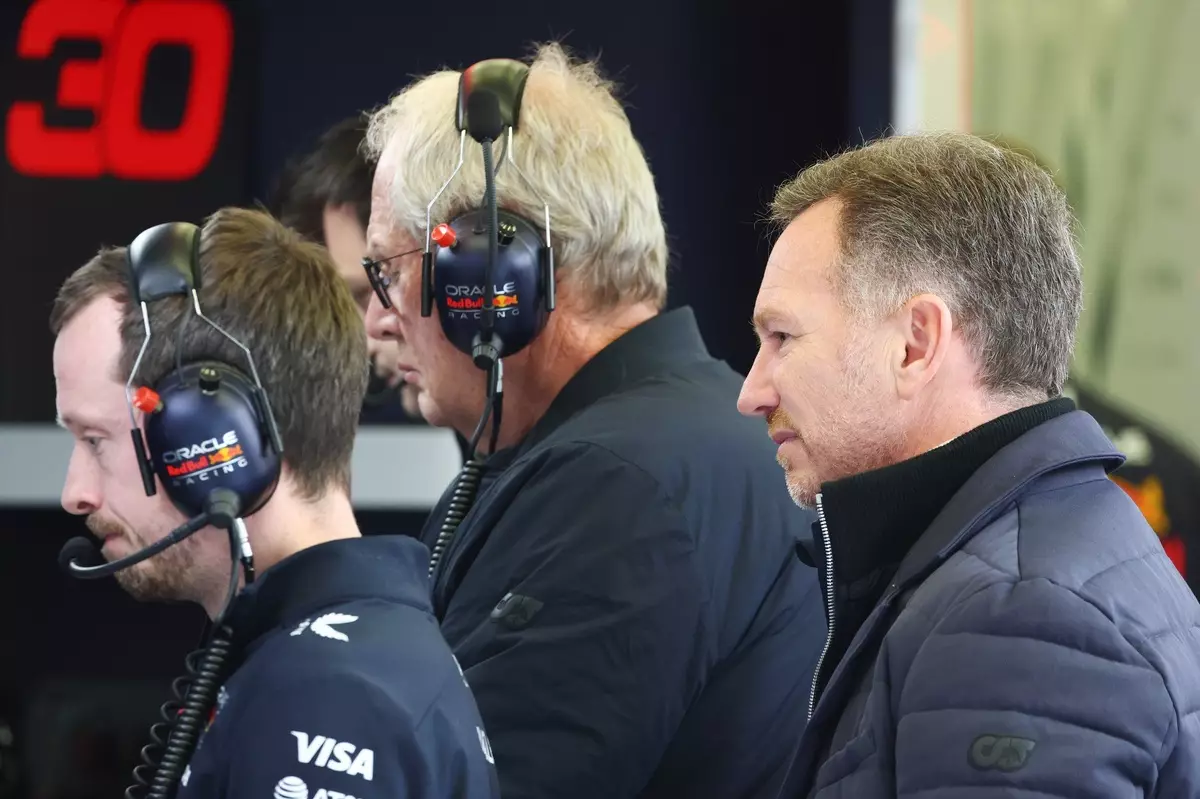In a sport as intensely competitive as Formula 1, precision and accuracy are paramount. The recent revelations by Red Bull Racing’s team principal, Christian Horner, emphasize a staggering dilemma regarding the correlation—or lack thereof—between wind tunnel data and actual track performance. After Max Verstappen managed to secure victory at the Japanese Grand Prix, the underlying issues that have plagued Red Bull’s performance since last season are becoming increasingly clear. Their recent struggles, particularly highlighted by underwhelming results like the Bahrain Grand Prix, signal that the team is not merely experiencing bad luck, but rather a systemic technical issue they must urgently address.
Horner’s metaphor of “two different watches” succinctly captures the frustrating divide between simulated performance metrics and real-world results. The RB21, which was expected to capitalize on the advantages that Red Bull had enjoyed for several seasons, appears to be hindered by issues reminiscent of those that affected Verstappen during his championship defense the previous year. As he notes, while some elements of their car setup have successfully masked these discrepancies—at least temporarily—there are deeper truths that cannot be ignored.
The Urgency of Crisis Talks
A crisis meeting following the Bahrain race underscores the severity of the situation. Such high-stakes discussions are not just typical protocol but are indicative of a team that recognizes the immediate need for action to remedy its performance woes. With the 2025 season being the final year before a significant regulation shift, the imperative for Red Bull to understand and rectify their aerodynamic deficiencies cannot be overstated. The team must extract insights from the sheer volume of data garnered from their races thus far, utilizing it as a guide to deconstruct the puzzles holding them back.
Horner expresses optimism yet caution, highlighting an awareness that while they may have identified the ailments, the actual deployment of solutions can be an arduous task. This suggests a larger organizational challenge: effectively transforming insights into actionable improvements in car design and fabrication. This is particularly true when minor gains are increasingly precious as they approach the end of the current regulatory cycle.
The Role of Wind Tunnel Data
The crux of Red Bull’s struggle appears to originate from the very heart of their engineering process: the wind tunnel. Historically, it has been a cornerstone for developing competitive racing cars. However, as Horner illustrates, reliance on old data can yield severely misleading results. It’s not merely the data itself, but the interpretation and application of this data that appears to be flawed. The disconnect suggests that the team may be conservative in their adjustments, leading them towards design specifications that do not resonate on-track, ultimately hindering drivers like Verstappen from fully realizing their potential.
Verstappen is equipped with remarkable skill and a keen sense of race strategy, yet even the most talented drivers are limited by the cars they pilot. The issues related to mid-corner entry performance that Horner articulates are particularly revealing. An aerodynamically competitive car must inspire confidence in its driver; if a car hesitates in corners, it compromises speed and control.
The Shadow of Competitors
As Red Bull remains embroiled in resolving their internal obstacles, other teams—most notably Haas and Mercedes—have seemingly capitalized on the opportunities afforded to them in this transitional phase. This dynamic introduces a broader competition layer that Red Bull must navigate carefully. While it’s common for teams to experience peaks and valleys of performance, the duration and severity of Red Bull’s decline raises questions about strategic choices and resource allocations.
The stakes are additionally raised by the impending arrival of newer regulations which promise to shake up the order of the grid. Red Bull’s reliance on their current wind tunnel apparatus, expected to last until 2027, adds further pressure. The new facility may eventually furnish them with an edge, but the realization of that potential lies in the near-future implementation of solutions derived from their existing setbacks—if they can pinpoint the right adjustments.
The situation for Red Bull Racing exemplifies the delicate balance between expectation and the harsh realities of competition. With Horner and his team at the helm, the journey forward is likely to be complex and intricate. But as they search for solutions, the very act of unpicking the complexities of their performance could reveal not just the key to their recovery, but also the defining elements of their future as a championship contender. In the world of Formula 1, where every millisecond counts, understanding the underlying fabric of car performance could transform this challenging narrative into one of renewal and resurgence.


Leave a Reply